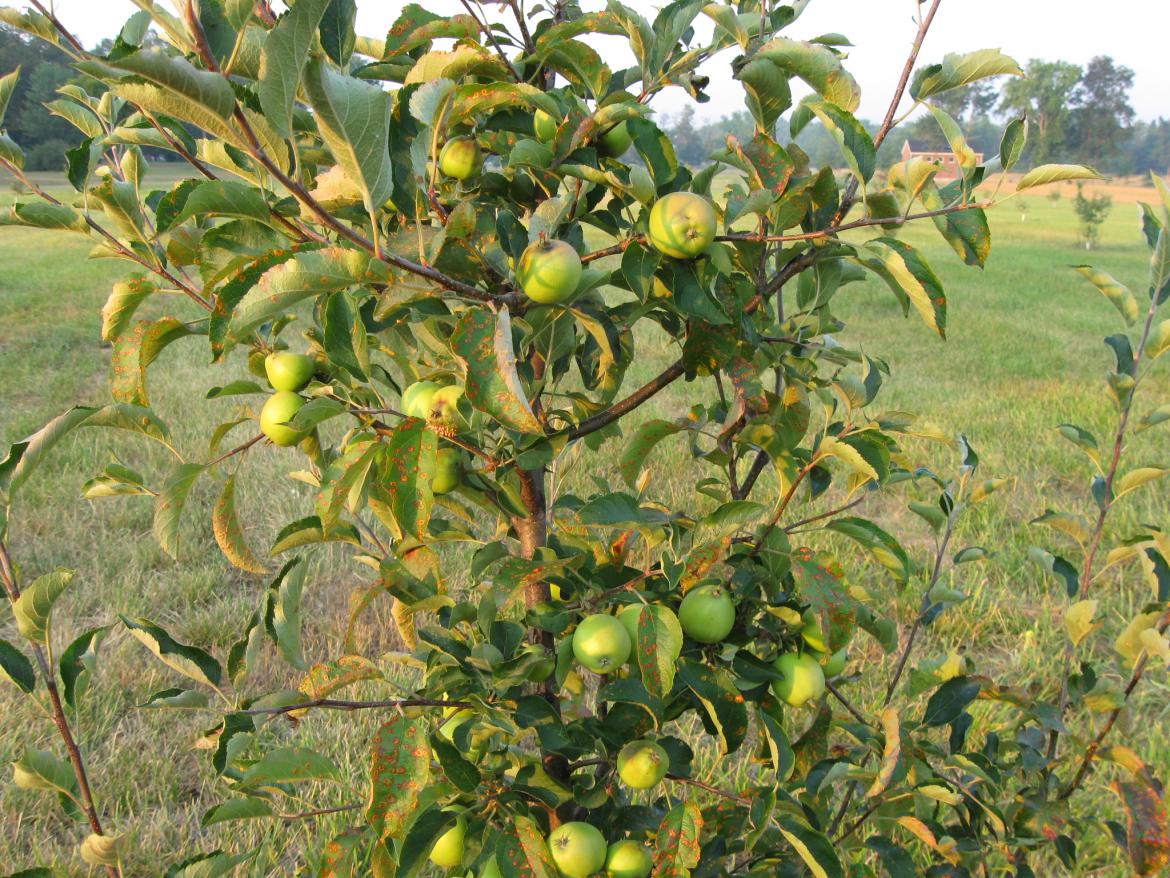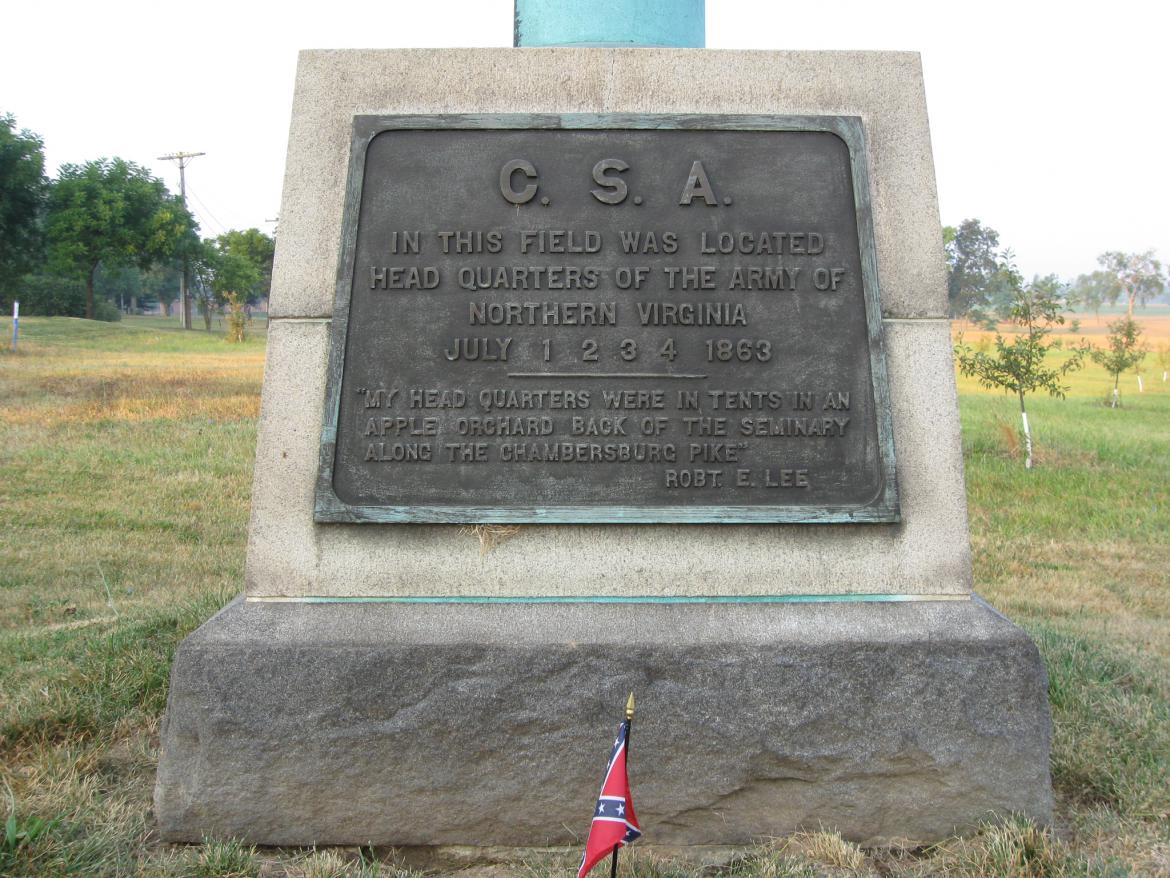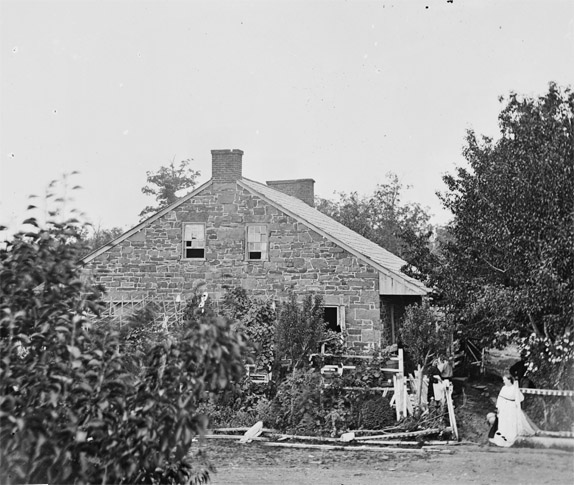Robert E. Lee.
The Heagy/Hartzell/Giffin side of the family centers in Adams (formerly York) county Pennsylvania.
County seat: Gettysburg. (In Cumberland township--the blue section on the following map.)
Last year I found a lovely 1858 map of Adams County Pennsylvania that labeled the actual homes of landowner ancestors Samuel Hartzell and David Heagy Sr. (Samuel Hartzell and David Heagy Sr. are the fathers of Ann Hartzell and David A. Heagy (Jr.) who married before the war began. David and Ann Hartzell Heagy are the great-grandparents of my grandpa, Ebert Heagy.) They are located northwest and north of town as "S. Hartzell" and "D. Hagey." Well, of course I immediately checked the Gettysburg National Park maps to see how their home locations compared with the battlefield. They don't really match up; the battle being more southwest of town. So, I didn't think much more about it and moved on to other projects.
However, just recently while researching someone else, I did come across some amazing info on Samuel Hartzell and the two Heagy Davids, records that shed a pretty bright light on this infamous place and time in history and how our family was affected. (The Heagy account will be covered in a companion article someday soon.)
Note: I'm tickled that this is also my second story for Storyapples that takes place in an apple orchard!
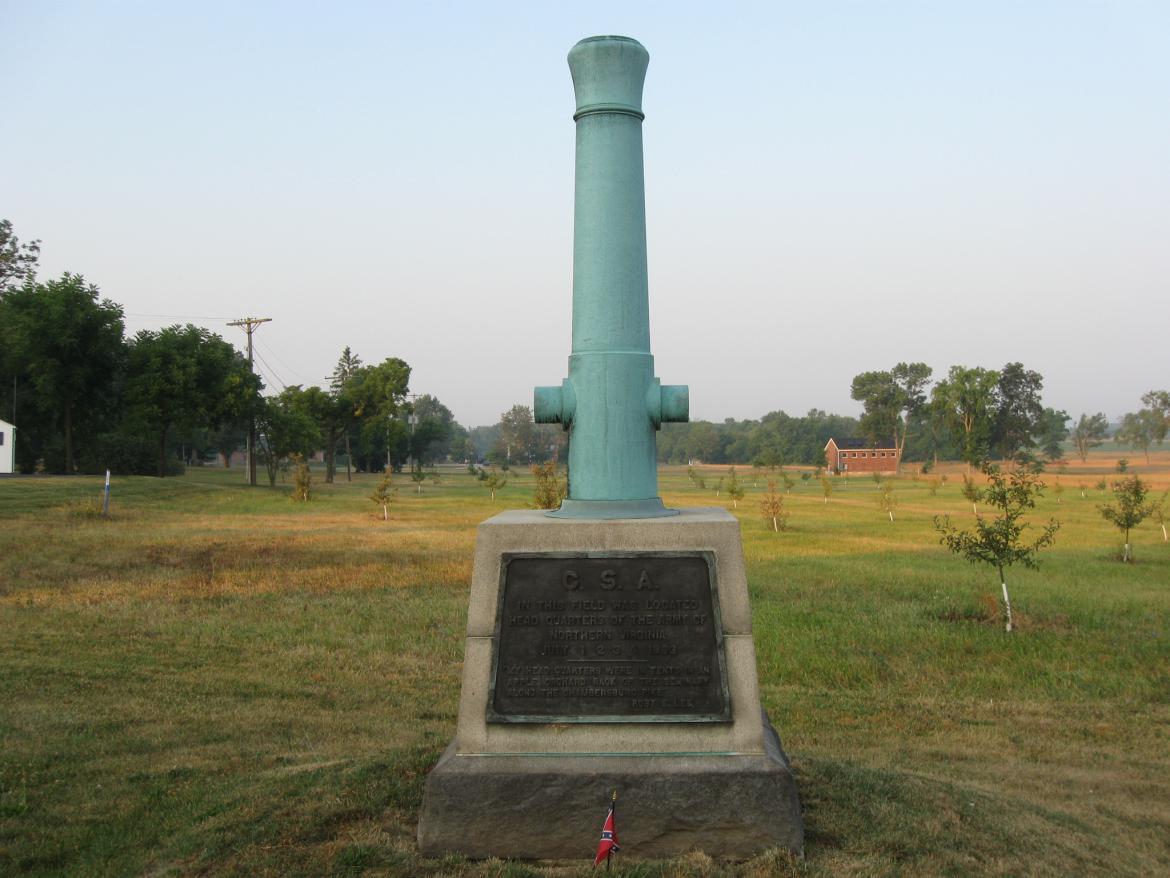 |
| The brick building in the background is the seminary building belonging to "Seminary Ridge." This picture is facing south. |
Or was there?
Not in 1863. And definitely not from the extremely busy Federal Government. But it turns out, in1868,(three years after the war was over and five years after the Battle of Gettysburg) the great State of Pennsylvania began to pass a series of acts designed to recompense civilians who sustained damages to property and goods during the war. In other words, some help came in the form of dollar signs, even if it was slightly delayed.
Nothing improves people's memory like a promise of some cold hard cash! Claimants could come to court, tell a bit of their story, leave an inventory of damages and their best estimate of how much they thought they should get. They also brought witnesses to sign affadavits, etc. Lucky for us, Ancestry.com has digitized these court records and we can find out what happened to Samuel Hartzell during the Battle of Gettysburg.
The petition of Samuel Hartzell, declares that he was a resident of Cumberland Township (includes Gettysburg) in 1863 and that "he sustained loss and damage in his property...the amount of damage sustained...which he prays may be allowed to him as follows, viz:" then Samuel gives his statement.
"That the Rebel Army occupied my farm for two or three days, that during that time they took from me the following property, viz:
One wagon & bed worth $70
 |
| A Skep of Bees |
3 Heiffers " 54
1 Scap of Bees " 10 [a "skep" of bees is a traditional straw beehive, as pictured.]
3 Hogs " 24
2 Scythes & Cradles " 8
3 Tern(?) of Hay " 30
4 Sett Horse Gears " 30
Corn & Oats in Barn " 14
829 Rails " 66.32
2 Colts 16 months old " 100
35 Acres grass destroyed " 150
2 Shovels and Mattock " 3.24
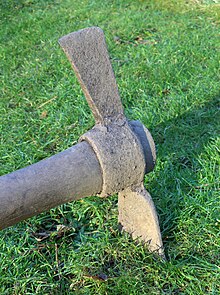 |
| Mattock |
Samuel was awarded $605.10, not quite the full $630 because the court ruled "The damage to meadows and fields as claimed ...is disallowed."
I wish that Samuel would have told a little more of what he was doing on those days, but he did have two witnesses give depositions to support his claim, and from there the picture becomes a little livelier. One witness was next door neighbor David Schriver. Mr. Schriver is on our map, so I am sure that Samuel was in fact living in the same house in 1863 as in 1858. Mr. Schriver stated to the court that: "he lives on the adjoining farm to Samuel Hartzell, that about the beginning of July part of the rebel Army occupied the farm of Samuel Hartzell. I was acquainted with the property mentioned in the appraisement and know that it was on the farm before the Rebels came and that it was not there after they left. I saw the Rebels on his farm and know that his Rails were destroyed & the grass of his meadows destroyed. I saw them burn the Rails. I put out the fire near the Barn, and that the appraisement made of the property destroyed & taken is not too much."
22 Oct 1868
David Schriver
I thought the "is not too much" was kind of a thoughtful phrase. I also wondered about the money for the fences. Did the fence belong solely to Samuel? Or would he have split the cost with his neighbors? Apparently not. I would assume that the rails were burned for firewood, but the fact that the neighbor had to put out a fire near the barn makes me wonder if the soldiers were just being destructive. Did you notice those rails removed and scattered on the ground in the picture of the stone house? Those would have been across the road from his orchard, but I'm assuming the soldiers did the same thing to his property. Here is another picture by Matthew Brady of that same property. This time, taken from deeper inside Samuel's orchard. Notice, these were probably some of the missing rails that he counted in his inventory. I think it's interesting that the soldiers left the posts. They must have been buried well.
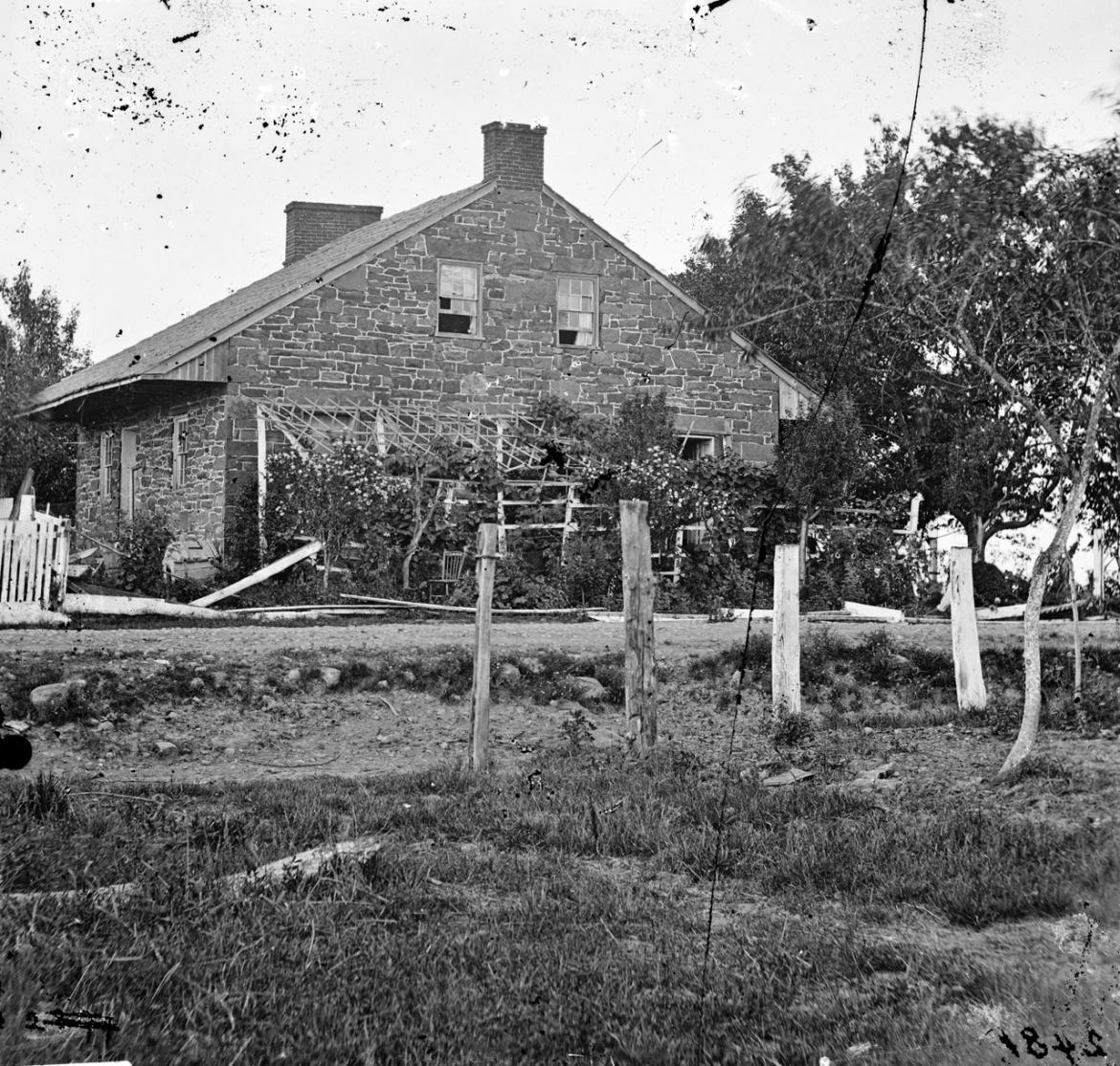 |
| Another view of the Thompson house, taken from Samuel Hartzell's orchard (Lee's headquarters). |
 |
| Portrait of Samuel and either his second wife Eliza or his 3rd wife Elizabeth. |
Samuel did lose a son, Elias Hartzell, age 23, in 1865, nearly two years after the Battle of Gettysburg, but I haven't yet researched if Elias was a casualty of war.
I also double checked my battle info on Wikipedia and found this battle map that explains why even though most of the well-known sites of the Gettysburg battle were south of town, as is the State Park, in real life, the enemy soldiers completely surrounded the Hartzell and Heagy properties northwest of town (as well as the apple orchard), and that there was actual fighting in that area the first day of the battle. That surprised me. I guess I always pictured the Southern forces attacking from, I don't know, the South? Rebels shown here in red, Union in blue.
I noticed that there was no mention of destruction to the apple trees on Samuel's claim, and the trees in the photographs looked fine. It's too bad--I was hoping someone down South owed me a pie.
If you would like to read the two articles about Lee's headquarters by GettysburgDaily.com, they are found here.
part one
part two

